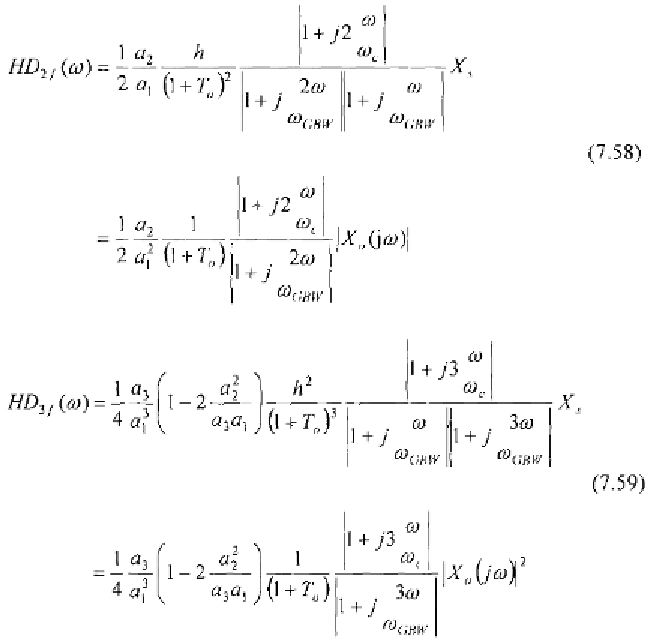Environmental Engineering Reference
In-Depth Information
Second- and third-order harmonic distortion factors start to
linearly
increase (from their low-frequency values) at a frequency equal to
and
respectively.
Moreover, they become constant at frequencies
equal
to
and
respectively.
At
they
begin
to
decrease.
A final observation concerns the distortion caused by the first amplifier
stage. Nonlinear contributions of the input stage are reduced by the loop gain
at low frequencies, and by the compensation capacitor at high frequencies
(compensation tends to shunt the output of the first stage). Therefore,
assuming the output stage as a principal source of nonlinearity is very well
justified both for low and high frequencies. We will show in the following
that this assumption is inadequate for Miller-compensated amplifiers.






